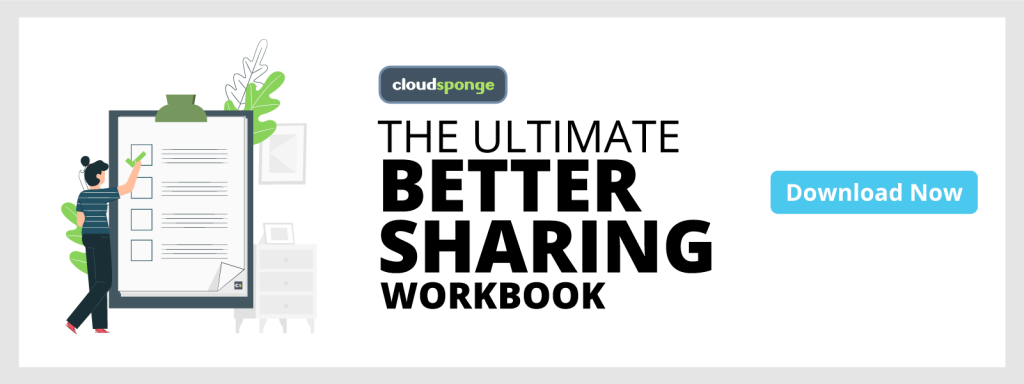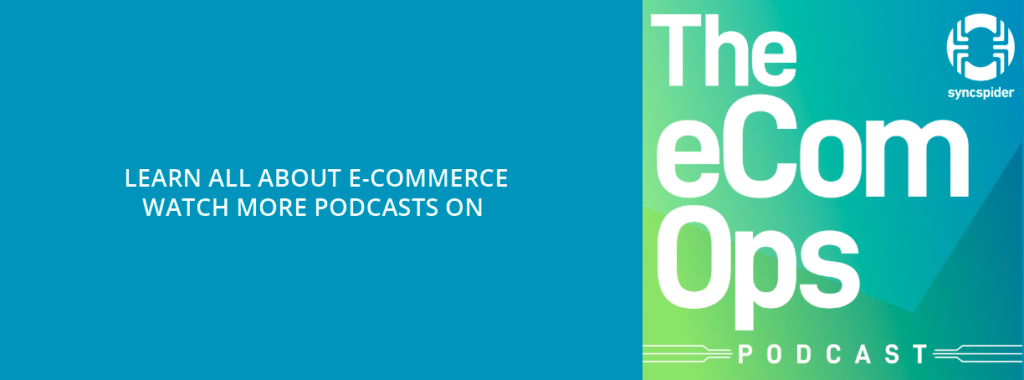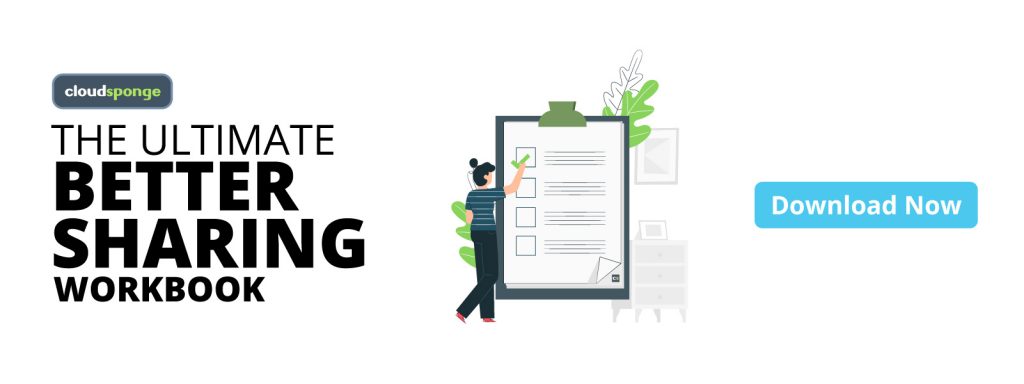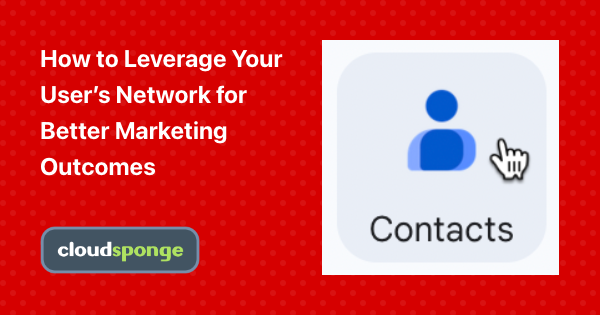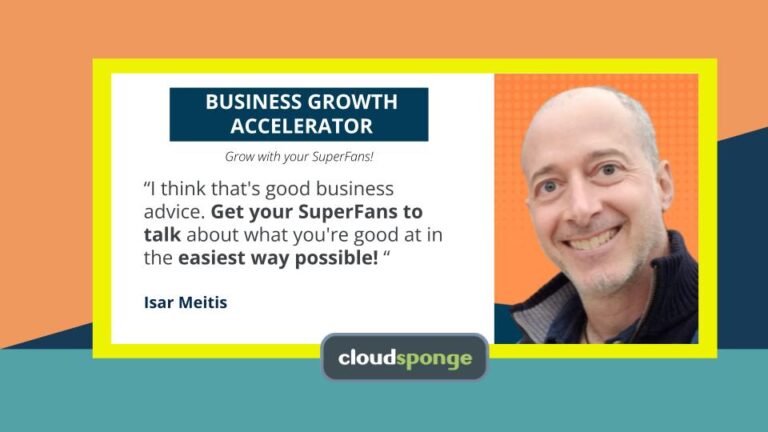Nobert Strappler, CEO of SyncSpider and the host of eCom Ops podcast spoke to our CEO, Jay Gibb, to understand how solutions offered by CloudSponge can help e-commerce stores optimise their website’s sharing interfaces to double (and in some cases nearly quadruple!) the performance of their word-of-mouth campaigns.
They discuss the virality potential of referral campaigns, how to set up for success, and what can be learnt by observing top brands such as StitchFix, Morning Brew, and more.
Take cognizance of your website's sharing features
Podcast Transcript
A quick tip that I highly recommend is to just start by taking an inventory of all the different sharing functionality that your e-commerce store has, and compare it to our list and just make sure that you have everything. So what we’ve seen as some of the best stories out there have this stuff that we’ve been talking about today. They’ve got the wishlist functionality, they’ve got some place where people can send their friend coupons, they’ve got a double-sided referral program, they’ve got sharing links on their product pages.
Norbert Strappler:
Hello, and welcome to the eCom Ops Podcast. We believe that there is more than enough content focused on e-commerce marketing, and not enough content celebrating the real heroes of e-commerce, those running the operation. Each week, we find and interview an e-commerce operations expert to share the secrets behind how some of this industry’s most exciting businesses are run. I’m your host Norbert Strappler, the CEO of SyncSpider. Welcome to another eCom Ops Podcast interview, today Jay Gibb from CloudSponge, a really great tool. They say on the website, double your word of mouth sales. Welcome, Jay, hello, welcome to the show.
Jay Gibb:
Hey, what’s going on Norbert?
Norbert Strappler:
Yeah, all good here. All good, and from your end, everything fine?
Jay Gibb:
Very good, thank you.
Norbert Strappler:
Awesome. Hey, Jay, you have a very great tool, tell us a bit more about yourself, and your tool?
Jay Gibb:
So my background is in engineering, I was a software developer out of college, 20 years ago.
Norbert Strappler:
A very long time, a dinosaur in web development, or in development, right?
Jay Gibb:
I guess so, yeah. I mean, it feels like it’s been a pretty long journey. I took kind of a more of an entrepreneurial track pretty early in my career, just building businesses. At some point my team and I decided to put together CloudSponge, which is a tool for e-commerce stores to help double or triple word of mouth sales, that’s been around for about 10 years.
Norbert Strappler:
Wow.
Jay Gibb:
Yeah, so we actually started this company, again, kind of with the classic scratch your own itch, kind of sort of origin story. At the time, what we were building was… We needed a way for what we were building at the time, we needed a way for users of… Web browsers, users, internet users, to be able to upload their address books. So by that I mean… Back then, that was Outlook for desktop, and Hotmail, and MSN, and Windows Live, and Gmail, and AOL, and Yahoo, and all the different places where people, regular consumers, might stores or address books. We built an API and a backend integration layer with all those different places so that we could ingest those address books and normalize them all to look the same, and then make them available on our own a website.
Jay Gibb:
As we were doing that, we just noticed there was a ton of other people doing it. There’s a lot of other developers that were solving a similar problem, and so we decided to sort of mothball the project that we were working on and just basically sell that as a software solution to e-commerce stores, and other companies that were trying to build something similar. Then from there, we kind of figured out, why do people want this and why are they building it, and what are the use cases for it? Then now, 10 years later, we’re focused on leveraging that functionality for e-commerce referral programs, and wishlists, and coupon sending, and product sharing, and all kinds of other stuff that e-commerce stores need and use people’s address books for.
Norbert Strappler:
Who is your customer? Is it the e-commerce store owner? Is it a platform? Is it the SAS provider, a referral program provider? Who is your customer?
Jay Gibb:
When we do a direct relationship, our customer is the e-commerce store owner, or the development team, or product team that handles their technology. In some cases, we have a more indirect relationship with them through a partner. So we’ll actually get paid from a referral program platform, for example, and we are sort of one degree, two degrees of separation from the actual store. But, like I said, we’ve been around for 10 years, so we kind of have a little bit of everything.
Norbert Strappler:
I can imagine that, bootstrapped?
Jay Gibb:
Yeah, self-funded.
Norbert Strappler:
Right. So let’s assume I’m an e-commerce store owner, and I want to implement a referral program. So what I understood is I can go to your tool, and I can use your tool to make it available for my buyers, for my customers in my store, that they can connect their address book what they have and send out a mass notification to their friends about the great e-commerce store. Using this referral program that is using the address data, and can benefit from that as a buyer, and the shop owner benefits from that, that you all the contacts already that you spread away your great products.
Jay Gibb:
Yeah, that’s right. I think, and that would be for a use case where you’re an e-commerce store owner who is building your own referral program. If you’re engineering… Many, many e-commerce stores do that, and the ones that have engineering teams and want to really have a custom experience.
Norbert Strappler:
Yeah, especially the bigger ones, right?
Jay Gibb:
Yeah, all the biggest ones. They’ll build that stuff, and they’ll build the functionality for sending those emails, and tracking the referrals, and handling fraud, and all that kind of stuff. We’re a really important ingredient in the overall recipe to be able to make it so that people don’t have to type email addresses. That’s really the friction point that we focus on is the fact that people, when you ask them to type their friend’s email address, they won’t do it, or maybe they’ll do one, right?
Norbert Strappler:
Yes, but not 10, or 20, or even more.
Jay Gibb:
If they’re on a mobile device, if they’re on an iPhone or an Android phone, good luck getting somebody to type in multiple comma separated list of email addresses, they’re just not going to do it, right?
Norbert Strappler:
Yep.
Jay Gibb:
Then it’s even more of an impact for e-commerce stores that have a wishlist or gift registries. If you’ve got a bride, who’s a bride-to-be, who’s about to put… They put together a big, long registry of a couple of 100 different products that they want their guests to buy for them. Getting that person to give you email addresses for their entire guest list, you have to have their address book. Most stores that before they discover a CloudSponge and Better Sharing, they’ll basically do that manually, or through a customer service experience, or they’ll send the person a blank Excel file and tell them to fill it in and send it back, or something like that. But the best stores will use CloudSponge to basically just give that bride access to her address book right there in their website, so that she doesn’t have to leave or do anything different, and just select as many people as she wants without having to actually type anything manually.
Norbert Strappler:
Yeah, this is really a very good use-case actually, and I think I can can’t even imagine that someone does it regularly, does it differently. Because I can’t imagine that when you need to put together a list of people, first of all, you will forget a lot of people that you could invite. Then when you have already that this list with your address book contacts, just make check boxes around those people that you want to have on the list. It’s much more easier, so this is really, really great use case. How did you get it into e-commerce, anyways? Why e-commerce? How did you get there?
Jay Gibb:
Just by following the opportunity, so we started off as a sort of a generic tool that… This is 10 years ago, but I didn’t tell you, and back to the origin story. We started off kind of with this thing that obviously had value to a lot of people, and we were selling it. Then I just, or all of us, we just kept talking to our customers all the time and seeing who are you? What business are you in? What are you doing? Why are you buying this from me? This is just good entrepreneurship, you want to kind of understand your customers, so you can find more people like them. Yeah, there’s actually a great spectrum, there’s quite a lot of different customers in different industries, and different types. We have a lot of companies like social networks, for the find your friends kind of users.
Jay Gibb:
We have a lot of e-card and event invitation companies for sending out holiday cards, and party invitations, and things like that. But the pattern that emerged was we ended up seeing that the customers that had basically direct monetary impact from our product. In other words, it’s not just nice to have a feature that makes their user experience a little bit better, it’s actually something that directly ties to their revenue. Because they see this and they say, “Cool, my customer acquisition cost for my referral program is X,” and they want to optimize that. Then they go find CloudSponge and they realize, “Wow, if I add CloudSponge to this thing, now it’s X divided by two.” Now, everybody who wants to refer already, everybody who’s sending those referrals, now those people send 3, 4, 5, 6, 7, 8 times as many referrals, because we made it easier that has a direct impact on their bottom line. So that’s why we do it.
Norbert Strappler:
That’s awesome, it’s like referral on steroids?
Jay Gibb:
Yeah, well, that’s why we say we double your word-of-mouth, because we’re not actually selling the referral program part. We’re like an accelerator for whatever is already working for your business, and then in the category of word-of-mouth, we’ll double it for you.
Norbert Strappler:
What does it mean for me to implement your tools? What technical expertise do I need, or how does this work to get that party started?
Jay Gibb:
So it’s really just a JavaScript plugin.
Norbert Strappler:
Wow.
Jay Gibb:
Yeah, anybody who’s got a form field on their site already, either something they’ve put on there themselves, or that’s coming from a third-party referral program system, or a Wish List plugin, or whatever. You can take our JavaScript, put it on your website, and you just point it at that field. You just say, “This is the field that I want email addresses to go into,” and then you put a button wherever you want it, and you make the button look however you want for your user to open their address book. So you put a button somewhere, usually it looks like a little address book icon, or [inaudible 00:12:17] of a button label that says, “Add from address book.”
Jay Gibb:
Some people will actually put the Gmail logo directly on the page or the Gmail, Outlook, Yahoo, AOL, whatever logos are useful for their market. They’ll put those on the page. It kind of, it depends on how you want it to look, you have full control over that user experience. But then when your user engages with it and they click on it, they get our experience. It pops up, it says, “Hey, give us permission to read your contacts from, from Google or whatever.” Once they do that, they see the alphabetized list of all their contacts. They can select everybody that they want and hit next. When they do that, the HTML field that you pointed it to just gets filled up with a comma separated list of email addresses.
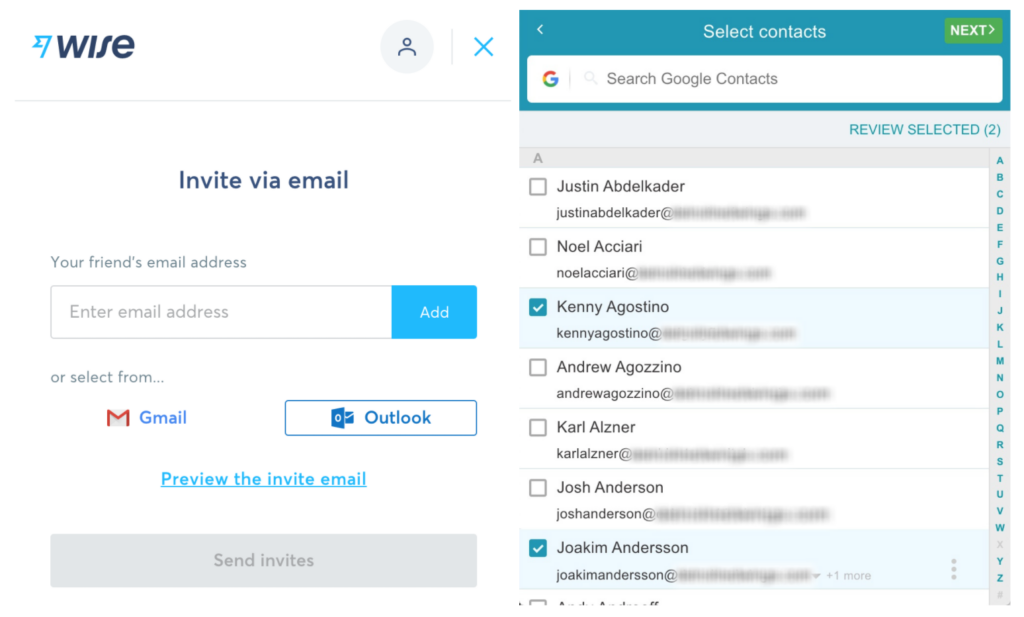
Norbert Strappler:
What a smooth idea, that really is easy. Very, very easy, and how do your charge your customers? How do you earn money?
Jay Gibb:
So we charge monthly, so it’s just a monthly fee. It’s unlimited usage, so for our lowest plan is 50 bucks a month. For that, you get everything, you get the contact picker, and we have a premium plan that’s more expensive that… It’s for the e-commerce stores that have the… They want their own brand, they basically want to white label our products so that it looks like they built it, and remove the logo, and change all the fonts, and colors, and texts.
Norbert Strappler:
I can imagine that, yeah.
Jay Gibb:
So we call that the branded plan and it’s more expensive, and then we have basically custom enterprise plans for giant organizations that they want to have like SLAs and special contracts, or whatever else they need. We’ve got an enterprise department that can handle negotiating stuff like that.
Try out the contact picker for yourself! Sign up for a free trial today!
Norbert Strappler:
Awesome, wow, very interesting. So I know that we have a lot of listeners also from Europe, and how do you deal with European customers? Is this GDPR compliant, or is thing something that is only available in the US, and states without GDPR?
Jay Gibb:
It is GDPR compliant, and we do have the necessary literature on the website, on the CloudSponge.com website for anybody that wants to really dig into that. So the simple way to think about it is that we’re a data processor, so our e-commerce stores consider us a data processor, and we don’t save anything, is the key thing. So we are a transient sort of middleman between your customer and your website, it’s a tool that they use. Everything just kind of stays in memory in RAM on our servers. So we do the work to get the data from the customer’s address book, we bring it into our interface, and they interact with their own contacts in your interface. When they’re done, everything is obliterated.
Jay Gibb:
The only thing that’s kept by CloudSponge’s servers is a log file of the fact that it happened, and some stuff that we can use for optimizing the user experience, like how long did it take to get the Google address book for this user and things like that. So it’s just really just a row of metadata about that API usage, but the actual sensitive data is never stored anywhere. You can log into your CloudSponge, you can’t even go look at it or use it, it’s not there. It’s really just something that it was a service that was provided to the person who owns the address book. You as an e-commerce store owner, you don’t even get the address book. What you get is the contacts that they deliberately explicitly chose to give to you, by agreed terms.
Norbert Strappler:
So this is really a great service, and I think I see a lot of opportunities there are for any kind of store owner who is out there and has a referral program already with a field where users can invite their friends. So they just have really… They just need the place where to put some JavaScript and point to an HTML field, as I understood, it’s really damn easy, if you have an well established… You can restore a small development team, you can easily do that, wow. Now, what I often ask, and what our users are really or our listeners are really loving, some quick tips. Do you have any quick tips? What could I do as an e-commerce store owner to improve my sales? What have you learned from your customers?
Jay Gibb:
Yeah, so I have a great answer to that, actually, which is we have a workbook for that. That answers that question, and we’ve collected all of the… One of the things that we do to be good at our business is we pay attention to what our customers are doing. We sort of learned from them, and try to deliver that knowledge on our blog, and on our website. One of examples of a quick tip that I highly recommend is to just start by taking an inventory of all the different sharing functionality that your e-commerce store has, and compare it to our list and just make sure that you have everything. So what we’ve seen is some of the best stories out there have this stuff that we’ve been talking about today. They’ve got the wishlist functionality, they’ve got some place where people can send their friend coupons, they’ve got a double-sided referral program, they’ve got sharing links on their product pages. Not every e-commerce store has those things, and I think for me, that’s the top of the funnel.
Jay Gibb:
That’s the first place to go and say, “Look, am I really giving my users all of the options to share these products and the existence of my store with people in whatever way that makes sense to them. Instead of prescribing one path, it’s good to just provide all the paths, because everybody’s different in terms of what they’re actually looking for. So that’s the first obvious quick tip. That’s basically, we have a workbook on our website that’s free, that people can get just with an email address.
Norbert Strappler:
It’s really easy to go there, just go to CloudSponge.com. When you’re on the homepage of the website, just scroll a bit down, and you see the banner sharing workbook. I think this is it, right?
Jay Gibb:
Yeah, I’ll do better though, we’ll make a link for your audience, so you-
Norbert Strappler:
Perfect, yeah.
Jay Gibb:
www.cloudsponge.com/ecomops, and we’ll just take them to the right spot for that.
Norbert Strappler:
Perfect, and guys, there are really great references on the website as well. So working for Reebok, Timberland, Harley Davidson, Gillette, so there is quite some big brands there. I’m really, really glad that it’s a software that starts at $50 per month, which is a good starting point for an e-commerce store. Because typically, such tools really can cost a lot of money if you implement it yourself or if you develop that or go buy an API, or something like that. This Java script part sounds very easy and reasonable to implement, so if you have something, this is really a good starting point for an e-commerce store to get that party started with word of mouth sales. Okay, thank you very much, Jay, it was really a pleasure talking to you, and great tool. If you have anything else to add, what you would recommend for our users, other than that…
Jay Gibb:
Great, well, thanks for having me, Norbert.
Norbert Strappler:
Absolutely, talk soon, bye-bye
Jay Gibb:
Okay, bye.
Norbert Strappler:
That’s it for this episode off the eCom Ops Podcast. If you enjoyed listening and would like us to find and interview more e-commerce operations experts, please search for eCom Ops Podcast in your favorite podcast listening app, and then subscribe, rate, and review. Until next time.

